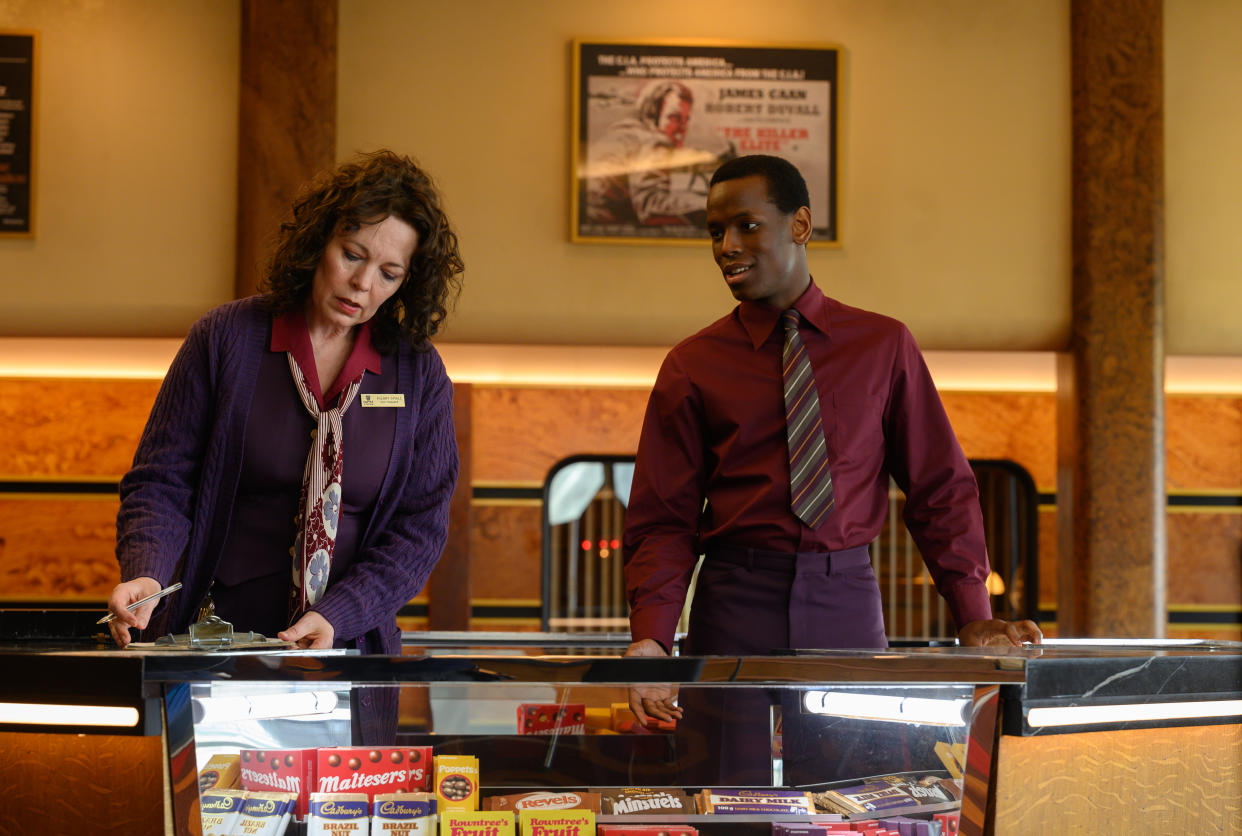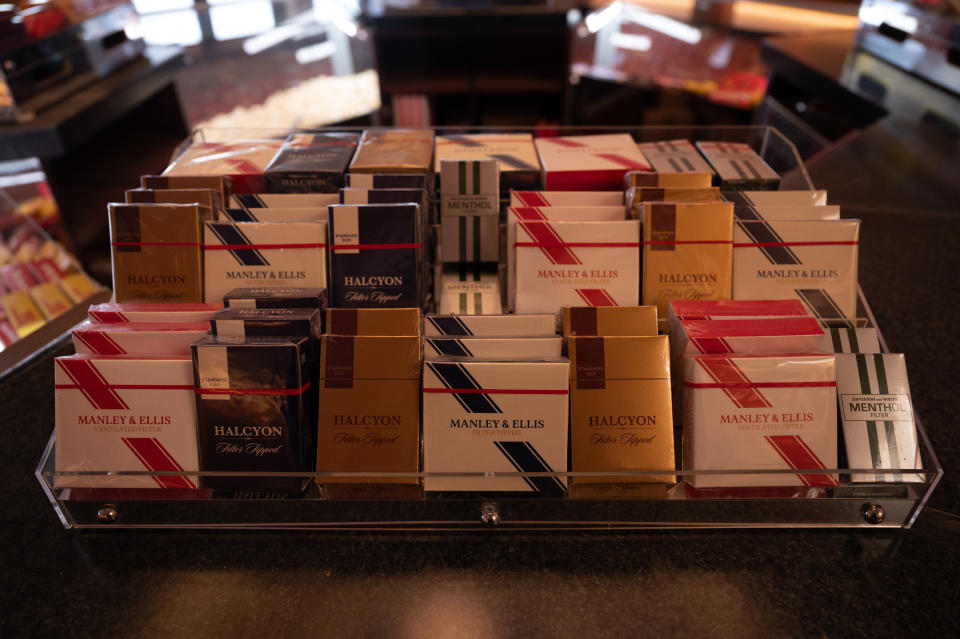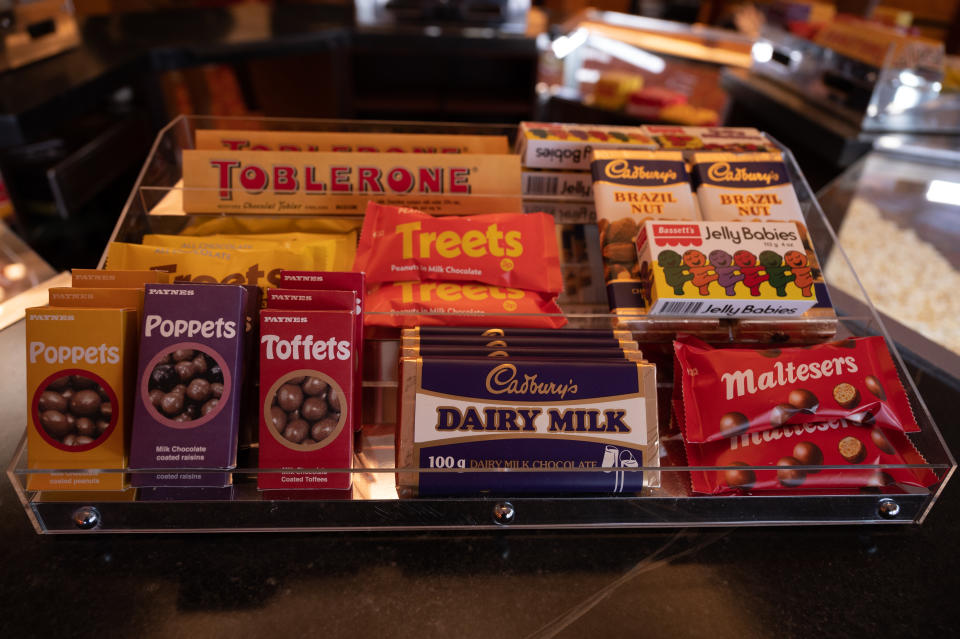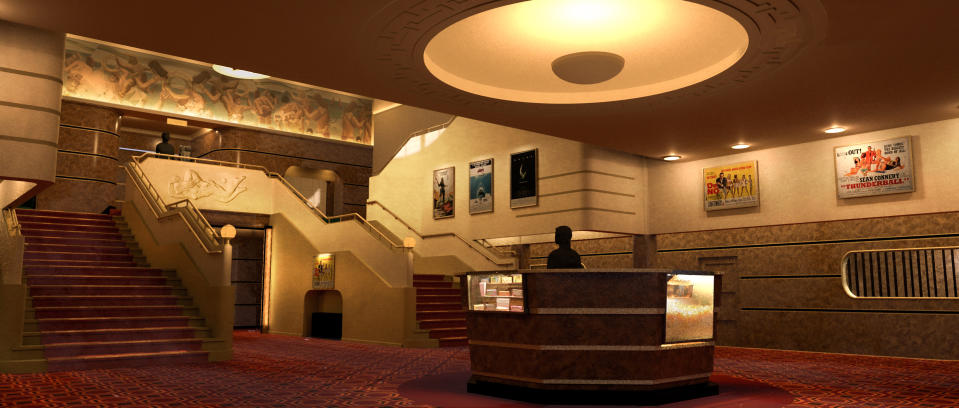Vintage Sweets, Invented Smokes: Taking the Concession Stand Back to the ’80s in ‘Empire of Light’

When it came to recreating an early ’80s-era cinema in a British coastal town for Sam Mendes’ “Empire of Light,” a vital part of the success lay in the most seemingly minuscule details. The film is the first collaboration between the filmmaker and acclaimed production designer Mark Tildesley. Childhood memories instantly proved to be a perfect jumping-off point for the fellow Brits.
“We started to chat about our cinema experience growing up, and I told him about a holiday I went on to the Isle of Wight,” Tildesley told IndieWire. “It was as miserable as buggery, freezing cold, and my mum said, ‘Let’s go to the cinema.’ You’d move out of that green, blue, dark, cold thing into this warm space. It was almost like a womb.” Tildesley recalled warmth and brightness with lush carpets, red velvet curtains, and “a sense of glory that says something amazing is going to happen.” At the heart of it was the concession stand.
More from IndieWire
“You’re in front of that glass cabinet, with your eyes bursting,” he said. “It was a treat. It created a real sense of escapism. The cinema could allow people to think, live, and dream differently.” Those possibilities were why Tildesley and Mendes chose to make the snack stand its own character in “Empire of Light.” Recreating the confectionary selection was among the things that the production designer and the other creatives tackled on day one.
“There are a couple of prop companies in the U.K. that deal with this kind of thing, but one specializes in old packaging,” he explained. “There’s a particular color in the paper, the texture, and everything. It’s striking how you remember those details. Some of them were very different from now. Even the scale and size were different, whether it was sweets or cigarette packets.”
When it came to candy — or ‘sweets’ as they are referred to in the U.K. — the process involved contacting manufacturers and discussing the use, or not, of brand names. The tobacco products presented their own issues.

Parisa Taghizadeh
“It was a real problem with cigarettes because the studios don’t want anyone to see smoking, and you can’t be seen to encourage it.” To solve that, Tildesley and the graphics and set decoration teams had to come up with fictional brands, a process he described as “slightly tricky” as they also needed to be based around the original names and designs. “People smoked in cinemas all the time back then, and that is referenced in the film.”
To recreate the candy, they took a different approach. “We bought vintage boxes, and then we deconstructed them, and we’d work backward from that with the printers,” Tildesley said. “Modern printing techniques have a slightly glossy feel to them. When you look at them together, there’s a texture and patina on the originals that’s older. It’s quite hard to define exactly what it is, but the paper was the starting point.” He described the older materials as “slightly bolder and more textured card,” whereas what the industry tends to use now is “a lot slicker.”
Maltesers and Opal Fruits (the latter now sold under their Americanized brand name, Starburst), were particularly tricky sweets to reproduce. “Sam was like an Exocet missile on all of this stuff, and I stood in these meetings, and getting into the detail of exactly what we’re going to use was incredible,” said Tildesley. “It was like a time warp when you stood before them. You are walked back to that moment you stood there as a kid. It’s a powerful, visceral, and emotional thing, and I’m not sure I was expecting that.”

Parisa Taghizadeh
The importance of the detail radiated out from the concession stand to the foyer and beyond, but not purely for aesthetic reasons. “If you’re driving a performance-led and character-based piece, then every little piece in that set tells you something about the person,” he said. “When the performers walk into that spot, they live in it, and it needs to feel right for them.”
Selecting the posters for the theater lobby was a “massive project” that partly involved purchasing several original posters for films of the time with Mendes, who had written some of them into the script. He was also keen to ensure they felt right next to each other, according to Tildesley. As with the candy, the use of paper stock, textures, colors, and printing played significant roles in establishing their authenticity. The next hurdle was getting the clearances to use them on screen, extending to the array of stills and photographs plastered through the projectionist’s booth, described by the production designer as a “man cave.”

Courtesy of Searchlight Pictures
“Sam and I would get like a big sheet, eight by four, and plaster it with photos,” Tildesley said. “We knew ones we felt were classic that he would have and then selected the others we thought he’d pick out.
“If you’ve got the studio and they have the rights lined up, you can easily do it,” he said. “You also get the other situation where you’re buying not just the rights to the poster or the photo but also the photographic rights of the people that took the headshots and then the performers themselves. There was an awful lot of wrangling.”
However, Mendes was a man with a plan — and another plan in case the first one didn’t work out. “One or two we didn’t get till the last second, and we had the replacement poster standing by in case it couldn’t go through.”
“In the end, sometimes the studio had to take a slight risk on it and decide whether or not anyone is going to come after them for it,” he said with a laugh. “Sam always had a good escape route if we couldn’t get something.”
Best of IndieWire
Sundance 2023 Movie Deals So Far: Paramount and Netflix Bite First
New Movies: Release Calendar for December 9, Plus Where to Watch the Latest Films
Sign up for Indiewire's Newsletter. For the latest news, follow us on Facebook, Twitter, and Instagram.

 Yahoo News
Yahoo News 
